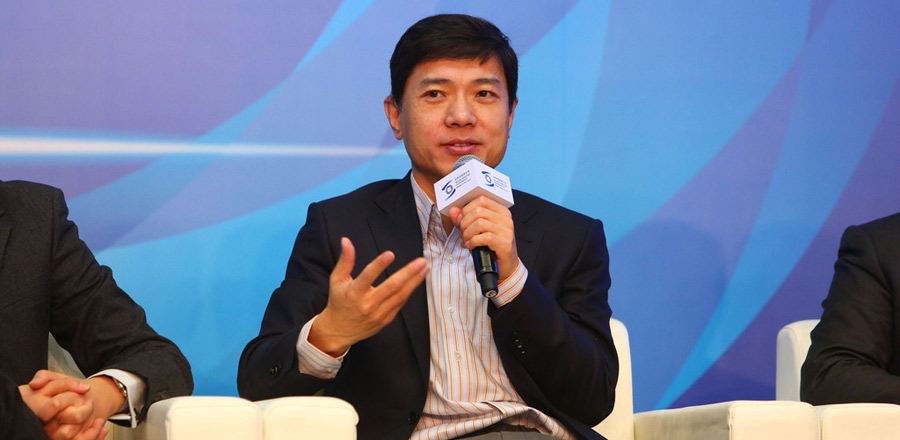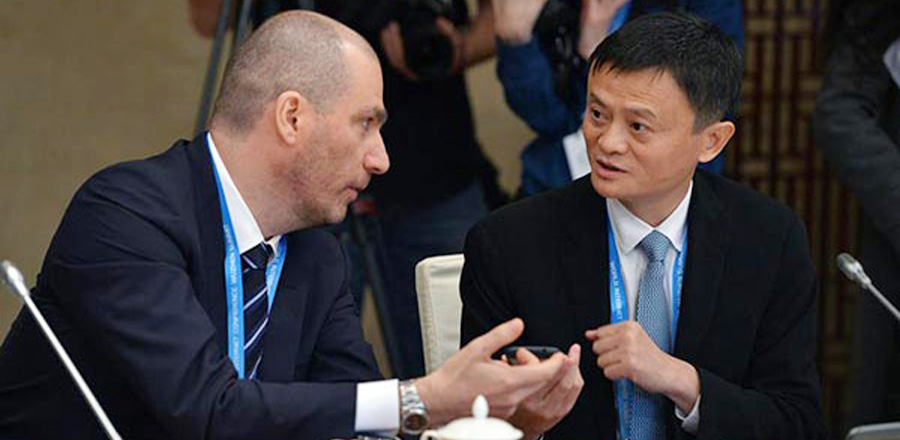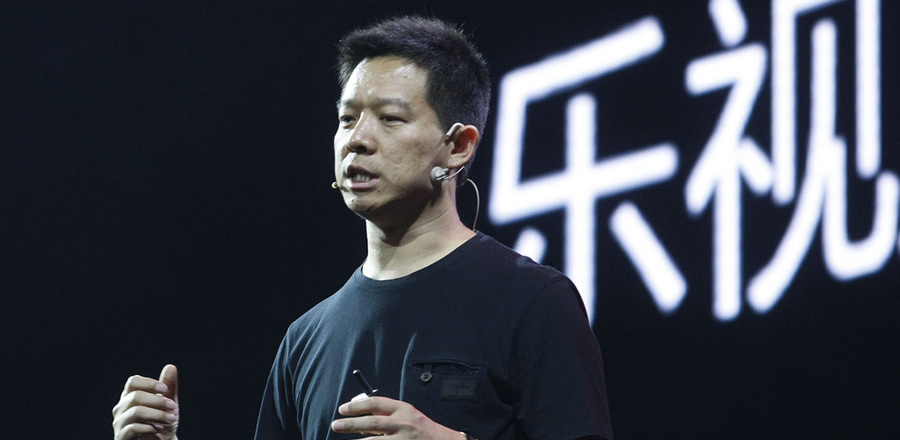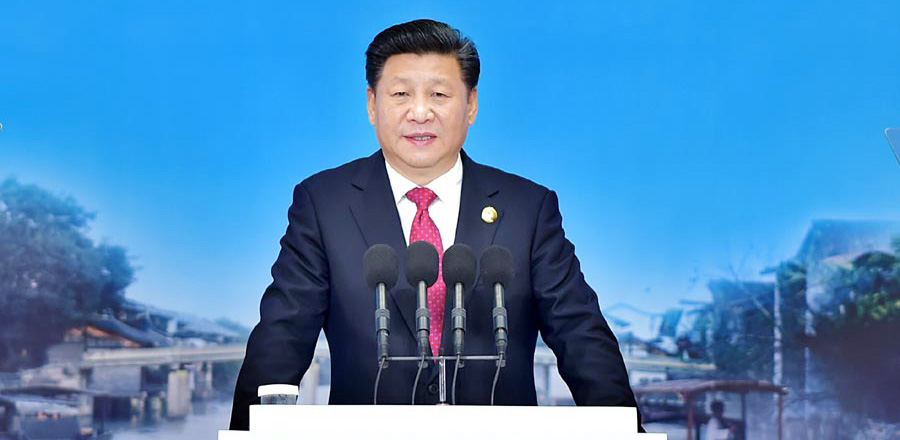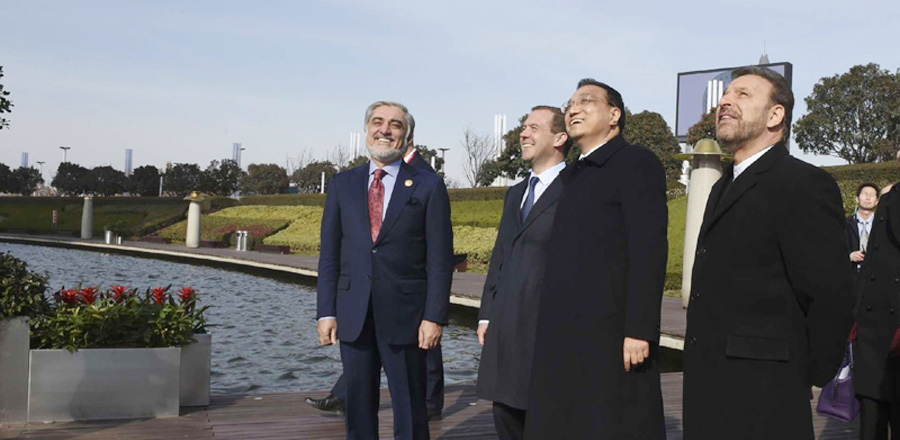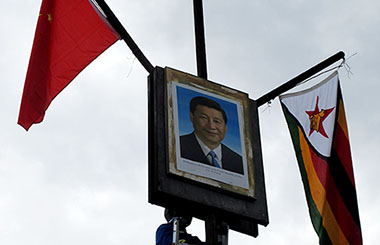
China is now growing as a two-speed economy, with the slower, more traditional sectors making way for newer, dynamic industries.
Analysts say the shift from old to new will help China transition from rapid growth to a more sustainable, high-quality growth pattern, but it also has big implications for foreign companies investing in China and for industries worldwide.
So which Chinese industries are slowing and which are speeding up?
|
A woman makes a digital payment at a supermarket in Shanghai on Dec 12. Consumer spending and the services sector are increasingly driving growth. Photos provided to China Daily |
Simply put, heavy industries such as coal, cement, glass and steel - the backbone of China's economic growth for decades - are on the slide, while service-oriented industries such as healthcare, financial services, tourism and education, as well as those related to the Internet and alternative energies, are on the rise.
To put this in context, data released in October by the National Energy Administration show China's electricity consumption, which is most affected by heavy industry, has grown just 0.3 percent year-on-year, which indicates the old GDP drivers are nearly, if not already, in recession.
By contrast, the latest China index compiled by research company MSCI suggests newer industries are becoming true growth drivers. The index, which covers about 85 percent of China's equity universe, including large and mid-cap stocks, puts the country's growth at 5 percent. Yet if we discount the data for the banking sector (old and dominated by state-owned enterprises) and the energy sector (strongly linked with traditional, heavy industries) then the rate rises to 25 percent.
Yet experts say foreign investors in China need to recognize these varying speeds of growth to form realistic expectations. While China's growing consumption may be providing a large market for service-oriented companies, countries that rely on exports of commodities to China for growth may need to fundamentally adjust their long-term strategies.
"Often when Western firms look at China's economy, they immediately think of the manufacturing industry, which is slowing down, but that is not the whole story because now service industries account for about 50 percent of China's economy," says Hui Tai, chief market strategist in Asia for JP Morgan Asset Management.
Manufacturing is slowing, but it is also finding new ways to grow, he says. For example, the industry is increasing its use of big data, the Internet, automation and technology. Meanwhile, many new industries are emerging, and Hui predicts their share of China's economic growth will become more important.
"The rebalancing of China's economy has had larger implications than previously thought on the global economy," says Robert Bergqvist, chief economist for SEB bank in Sweden. "Apparently, the super cycle for commodities and energy seems to have come to an end, and world trade volume is now moving sideways.
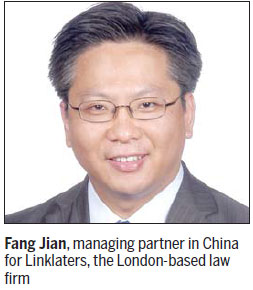
"The world has become aware of China's importance for the global economy, and China's economic and financial challenges are shared by all countries around the globe, right now especially by many commodity- and energy-intensive exporters."
Sustainable vision
The two-speed structure implies slower average GDP growth in China overall. This year, during high-level discussions on China's 13th Five-Year Plan, the nation's blueprint for growth between 2016 and 2020 that will be finalized in March, the government said it had a target to double GDP between 2010 and 2020. This would require growing the economy by an annual average of 6.5 percent over the next five years.
This rate signifies a major slowdown from the double-digit growth that the country experienced over the past three decades, but it points to a more sustainable long-term growth model.
"China is reducing its GDP growth rate projections because it is realizing that a manufacturing-driven model is not sustainable, especially considering the adverse impact it has on the environment," says Kerry Brown, a professor of Chinese studies and director of the Lau China Institute at King's College, London.
"The country is in a process of transitioning into a more-diverse economy with bigger service and financial sectors. But as these sectors take time to build, China needs to accept a slower growth rate in the transitioning process."
The two-speed economy is a reality of that process, according to Fang Jian, managing partner in China for Linklaters, the London-based law firm.
"There will be industries that will become less competitive in this environment, so the challenge is maintaining stability and managing change to minimize economic disruption," he says. "This will be achieved by equipping the workforce of tomorrow with the skills and education to keep pace with technological change. As China moves its reliance in GDP growth from infrastructure investment and exports to consumption, the high growth of its new economy will be critical."
Middle-income range
One big advantage of the two-speed economy is its ability to help China avoid the so-called middle-income trap, says Robert Davis, a senior portfolio manager at NN Investment Partners.
The middle-income trap is when a developing economy starts to lose its low-cost labor competitiveness but does not have the technology to compete with advanced countries.
For example, newly industrialized countries such as South Africa and Brazil have not, for decades, left what the World Bank defines as the middle-income range. They suffer from low investment, slow growth in secondary industries, limited industrial diversification and poor labor-market conditions.
"China's rebalancing program is intended precisely to move across this gap and avoid the trap," Davis says. "The difficulty is that reforms are usually needed to allow for productivity growth and innovation development" that are needed for this to happen.
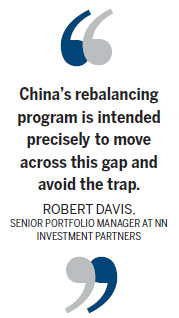
Unlike South Africa and Brazil, China's two-speed growth model is driving investment into services and high-tech industries, while making its manufacturing industry more high-tech. Within this context, industries like e-commerce, Internet industries and healthcare insurance are growing fast because of the emergence of China's middle class and the growing spending power of this population.
China's service purchasing managers index measured 50.5 in September compared with 49.8 for manufacturing. The PMI is an indicator of business activity based on surveys that measure respondents' perceptions of key business variables.
In addition, many of China's other economic indicators also paint an optimistic picture. For example, the retail sector is registering 11 percent year-on-year growth, according to official data.
Structural shift
The manufacturing sector has been vital to China since the government started the process of reform and opening-up in the late 1970s, which led to an export-driven boom.
During this time, China made good use of its low-cost labor supply and its domestic production's economy of scale to manufacture low-end products, and used a managed currency exchange rate to help ensure its export competitiveness. This model of growth coincided with the debt-fueled demand for goods by many Western countries.
Jan Dehn, head of research at Ashmore, an emerging-markets investment management company in London, says this model was successful between 1980 and 2008, but after the financial crisis its basis disappeared due to weakened demand from Western countries, the appreciation of the renminbi and rising labor costs.
To find new ways to grow the economy, he says, China should rely more on domestic consumption, which the country can realistically achieve because its savings rates are almost 50 percent. In addition, its exporters must increase productivity, so that they can continue to be competitive despite a stronger currency over the medium term and rising labor costs at home.
Dehn also says China should take this structural shift as an opportunity to find new competitiveness for its manufacturing industry, using innovation and large-scale domestic consumption as key advantages.
"First, we should expect China to become far more innovative," he says. "Chinese manufacturing firms are in fact already innovating rapidly. Chinese companies innovate by making many smaller, customized innovations."
These incremental innovations mostly focus on products tailored to consumer needs, are more flexible and ultimately less risky compared with Western innovation leaders such as Apple, "where engineers go into hibernation for three years and then produce a brand new product".
Second, he adds, Chinese companies roll out their innovations in the enormous domestic market first. This gives them the economies of scale that allow them to lower unit cost for products and helps to establish a low and competitive cost base.
"I expect we'll see many of China's innovative, low-cost, high value-added manufacturing firms burst onto the global stage in the coming years, and they will pose a major challenge to less-competitive manufacturing firms in the West," Dehn says. "This would be a second wave of Chinese manufacturing, competing on the basis of innovation and replacing the first wave, which was based mainly on cheap labor."
JP Morgan's Hui says the structural shift to be achieved through the changing dynamics of the old and new economies is in line with the 13th Five-Year Plan because it places a heavy emphasis on the service sectors. However, to make this shift, he says it is important for China to push reforms of state-owned enterprises and encourage the growth of private-sector companies.
In the past, SOEs have been a key driver for the Chinese economy, but going forward private firms could become the key force, he says.
To ensure economic reforms are effective, China should allow market forces to take effect, and should further develop its laws to encourage private-sector development, as sometimes standard processes like getting an operation license can be difficult, Hui says.
In addition, it is important for the Chinese government to set a more level playing field for Western firms in its domestic market, to create faster-growing industries, as many Western firms are leading the way in service sectors.
cecily.liu@mail.chinadailyuk.com
|
A worker checks the gears of a machine in a factory in Dalian, Liaoning province, in December. China's manufacturing industry is turning to innovation to maintain its competitive edge. Liu Debin / For China Daily |
(China Daily Africa Weekly 12/18/2015 page6)
